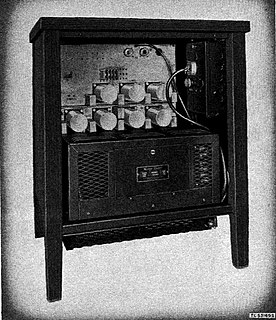 W
WForeshadow, known as L1 Terminal Fault (L1TF) by Intel, is a vulnerability that affects modern microprocessors that was first discovered by two independent teams of researchers in January 2018, but was first disclosed to the public on 14 August 2018. The vulnerability is a speculative execution attack on Intel processors that may result in the disclosure of sensitive information stored in personal computers and third-party clouds. There are two versions: the first version (original/Foreshadow) targets data from SGX enclaves; and the second version (next-generation/Foreshadow-NG) targets virtual machines (VMs), hypervisors (VMM), operating systems (OS) kernel memory, and System Management Mode (SMM) memory. A listing of affected Intel hardware has been posted.
 W
WLoad value injection (LVI) is an attack on Intel microprocessors that can be used to attack Intel's Software Guard Extensions (SGX) technology. It is a development of the previously known Meltdown security vulnerability. Unlike Meltdown, which can only read hidden data, LVI can inject data values, and is resistant to the countermeasures so far used to mitigate the Meltdown vulnerability.
 W
WMeltdown is a hardware vulnerability affecting Intel x86 microprocessors, IBM POWER processors, and some ARM-based microprocessors. It allows a rogue process to read all memory, even when it is not authorized to do so.
 W
WThe Microarchitectural Data Sampling (MDS) vulnerabilities are a set of weaknesses in Intel x86 microprocessors that use hyper-threading, and leak data across protection boundaries that are architecturally supposed to be secure. The attacks exploiting the vulnerabilities have been labeled Fallout, RIDL, ZombieLoad., and ZombieLoad 2.
 W
WIn cryptography, a side channel attack is used to extract secret data from some secure device. Side-channel analysis is typically trying to non-invasively extract cryptographic keys and other secret information from the device. A simple example of this is the German tank problem: the serial numbers of tanks provide details of the production data for tanks. In physical security, a non-invasive attack would be similar to lock-picking, where a successful attack leaves no trace of the attacker being present.
 W
WSpectre is a vulnerability that affects modern microprocessors that perform branch prediction. On most processors, the speculative execution resulting from a branch misprediction may leave observable side effects that may reveal private data to attackers. For example, if the pattern of memory accesses performed by such speculative execution depends on private data, the resulting state of the data cache constitutes a side channel through which an attacker may be able to extract information about the private data using a timing attack.
 W
WTEMPEST is a U.S. National Security Agency specification and a NATO certification referring to spying on information systems through leaking emanations, including unintentional radio or electrical signals, sounds, and vibrations. TEMPEST covers both methods to spy upon others and how to shield equipment against such spying. The protection efforts are also known as emission security (EMSEC), which is a subset of communications security (COMSEC).